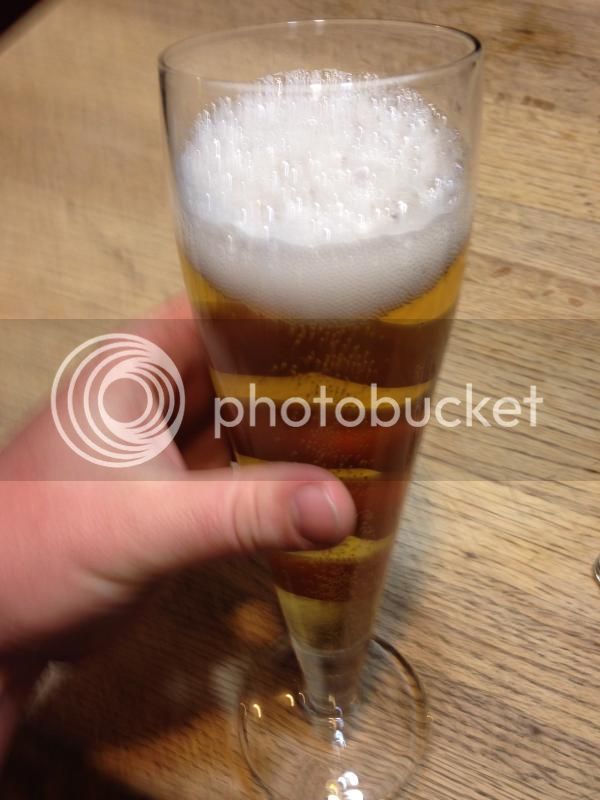I made an extract American Pale Ale
Receipe was as follows:
1# Crystal 20L, 8 oz Biscuit Malt
3.3# Light LME, 3# Light DME
¾ oz Chinook pellets (9.8 AAU) full hour
3/4 oz Centennial pellets (7.5 AAU) last 25 min of boil.
1 oz Centennial pellets (10 AAU) last 15 min of boil.
1 oz Cascade pellets
https://beerbrew.com/downloads/Recipes/HopheadPaleAle.pdf
The instructions call for5 oz of priming sugar. I checked http://www.northernbrewer.com/priming-sugar-calculator/
my brew will be stored at 63 to 61 degrees in the basement. exactly the same temp as it is currently fermenting.
a few questions
why does the temp change the amount of priming sugar?
Why does the directions tell me 5 oz & the calculator tell me 3.96 OZ?
Will I get bottle bombs if I follow the directions and use 5 oz?
Since this is my first time I am trying to follow the directions to get a good sense of the process. The only change I am making is adding the priming sugar after I have racked. I will be racking to a carboy this weekend once I have hit the target FG, but will be unable to bottle until the week after. I figure adding priming sugar is easier than racking yet again!
Receipe was as follows:
1# Crystal 20L, 8 oz Biscuit Malt
3.3# Light LME, 3# Light DME
¾ oz Chinook pellets (9.8 AAU) full hour
3/4 oz Centennial pellets (7.5 AAU) last 25 min of boil.
1 oz Centennial pellets (10 AAU) last 15 min of boil.
1 oz Cascade pellets
https://beerbrew.com/downloads/Recipes/HopheadPaleAle.pdf
The instructions call for5 oz of priming sugar. I checked http://www.northernbrewer.com/priming-sugar-calculator/
my brew will be stored at 63 to 61 degrees in the basement. exactly the same temp as it is currently fermenting.
a few questions
why does the temp change the amount of priming sugar?
Why does the directions tell me 5 oz & the calculator tell me 3.96 OZ?
Will I get bottle bombs if I follow the directions and use 5 oz?
Since this is my first time I am trying to follow the directions to get a good sense of the process. The only change I am making is adding the priming sugar after I have racked. I will be racking to a carboy this weekend once I have hit the target FG, but will be unable to bottle until the week after. I figure adding priming sugar is easier than racking yet again!



